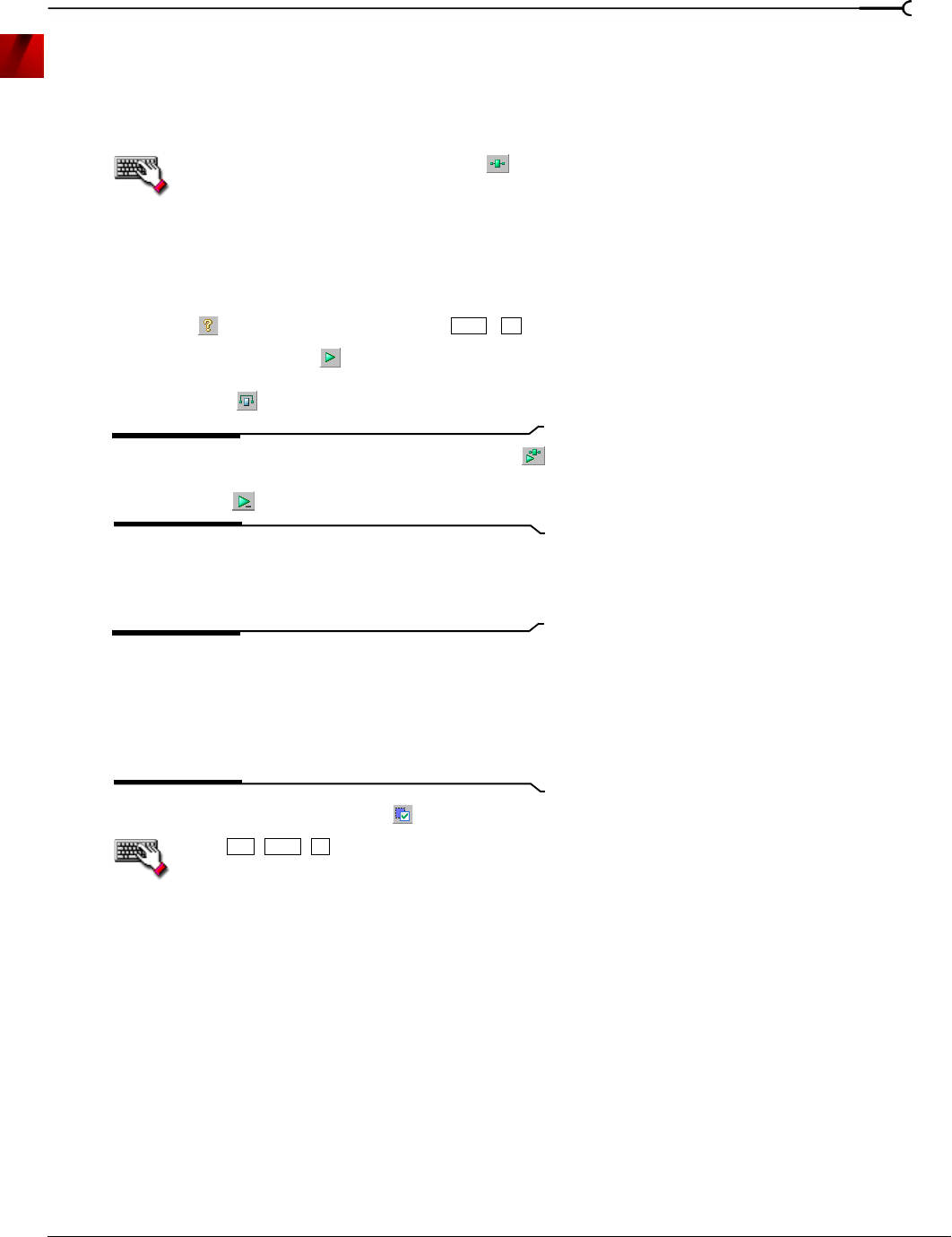
CHP. 11 APPLYING EFFECTS
171
Applying effects using the Plug-In Chainer
1.
Select the data you want to process. If no data is selected, Sound Forge applies the effect chain to the
entire file.
2.
From the View menu, choose Plug-In Chainer. The Plug-In Chainer window appears.
Click the
Open Plug-In Chainer button ( ) on the data window.
3.
To use an existing chain preset, choose the chain from the Chain Preset drop-down list. For more
information, see Saving plug-in chains on page 175. Otherwise, add the desired plug-ins to a new custom
chain. For more information, see Adding plug-ins to a chain on page 172.
4.
Configure the parameters of each plug-in. For help on the different plug-in controls, click the Help for Plug-
In
button ( ) or click a control and press + .
5.
Click the Preview button ( ) to test the effect chain. If needed, you can select different parts of the audio
in the data window to preview different sections before applying the effect chain. You can also click the
Bypass button ( ) to temporarily bypass the effect. For more information, see Bypassing effects on page 174.
Tip:
You can also click the Play Plug-in Chainer button ( )
on the data window to preview the effects chain. Use the
Play
Normal button ( ) to bypass the effects.
6.
If the effect changes the duration of a sound (for example, Reverb or Simple Delay), choose how Sound
Forge processes the audio tail created by the effect. For more information, see Selecting the processing mode
for audio tail data on page 173.
Note:
The Insert Tail Data and Mix Tail Data commands
may not function when using third-party reverb plug-ins.You
can use the
Insert Silence command to make room for the
tails or apply the reverb in a new data window that has room
for the tails and then mix the processed audio back into your
source file.
7.
Click the Process Selection button ( ) to apply the effect chain.
Press
++.
Shift
F1
Ctrl Shift
P
